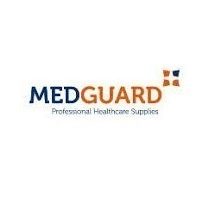Sterile Gloves: A Comprehensive Guide to Nitrile Examination Gloves
As healthcare environments evolve, sterile gloves have become a vital aspect of preventing the transmission of illnesses. Nitrile examination gloves are a popular choice among the various types of gloves because of their durability, resistance to punctures and chemicals, and flexibility. But, unfortunately, not all nitrile examination gloves are the same, and it can be difficult to locate the gloves that are ideal for the demands of your healthcare facility. And therefore, to help you make a well-informed choice, we have compiled this detailed guide. OK, let’s jump right in!
Benefits of Nitrile Examination Gloves
- One study found that nitrile gloves are more puncture-resistant than latex and vinyl gloves.
- Those with latex allergies can benefit greatly from using nitrile gloves since they offer superior protection against chemical hazards.
- Nitrile gloves are also highly regarded for their high level of comfort and responsiveness to the wearer’s touch. The Powder-Free Nitrile Examination Gloves by Medguard, for instance, are perfect for medical use because they are latex-free and allow for optimum dexterity during patient examinations.
Sterile Environments and the Need for Sterile Gloves
The use of sterile gloves is crucial in infection control in controlled settings.
- Because even minimal contamination can have catastrophic effects, sterile gloves are an absolute necessity in settings like hospitals and labs.
- Sterile gloves are essential in operating rooms because they protect medical practitioners from contact with potentially infectious bodily fluids and prevent the spread of infection from one patient to another.
- Using sterile gloves in a cleanroom helps to keep the air free of any contaminants that could compromise the finished goods.
Types of Sterilization Techniques for Nitrile Examination Gloves
Nitrile examination gloves can be sterilized using a variety of techniques, such as steam sterilization, gamma radiation, and ethylene oxide gas sterilization.
- In hospitals and other healthcare institutions, steam sterilization is a widely utilized, safe, and efficient technique.
- Another sterilizing technique is gamma irradiation, which uses high-energy gamma rays to kill bacteria on medical supplies and equipment.
- At hospitals and other healthcare facilities, nitrile gloves and other medical supplies are frequently sterilized using the ethylene oxide gas sterilization technique.
How to Choose the Right Nitrile Examination Gloves for Sterile Environments
Choosing the right size and thickness of nitrile examination gloves for use in sterile conditions is crucial. Surgical gloves require a higher level of cleanliness than examination gloves because of their more direct connection to patient care.
To maximize their useful life and tactile sensitivity, gloves should fit tightly without being restrictive. The CASE MG Nitrile Gloves PF Dark Blue/ Indigo, made by MedGuard Healthcare, is an excellent choice for a wide variety of medical procedures because of its high level of tactile sensitivity.
Proper Use and Disposal of Nitrile Examination Gloves
Nitrile examination gloves must be used correctly and disposed of properly to avoid the spread of disease. Hands should be cleansed and dried before and after glove use, as recommended by the Centers for Disease Control and Prevention (CDC). Medical personnel should change gloves between patients and jobs, as well as prevent touching their faces or other surfaces while wearing gloves. Dispose of away gloves in the appropriate trash cans.
We at MedGuard make it a point to supply our clients with disposable gloves that are both cheap and environmentally friendly.
Conclusion
In healthcare settings, nitrile examination gloves are commonly used because of their many benefits compared to alternative materials. This guide will help you choose the right pair of nitrile examination gloves to buy, ensuring the safety of medical staff and patients.

